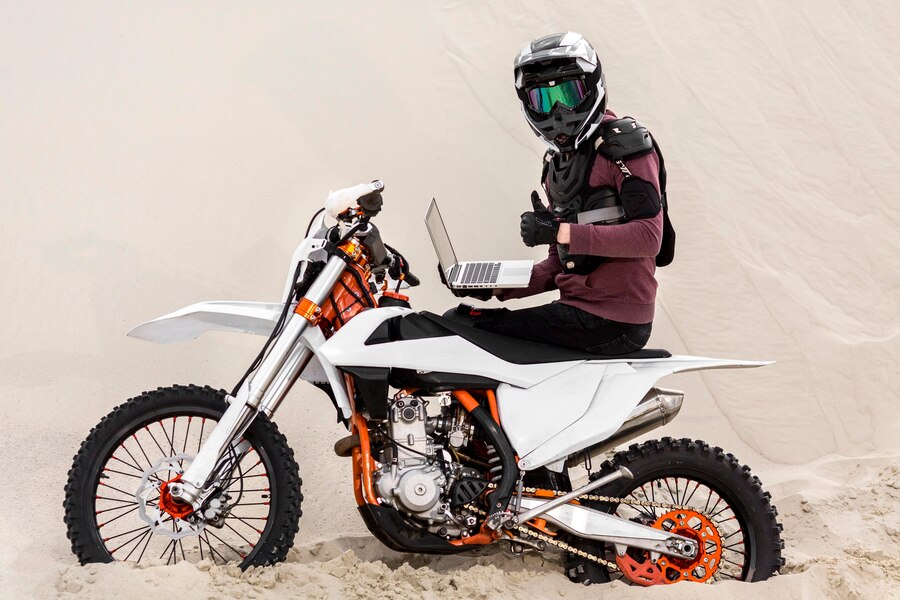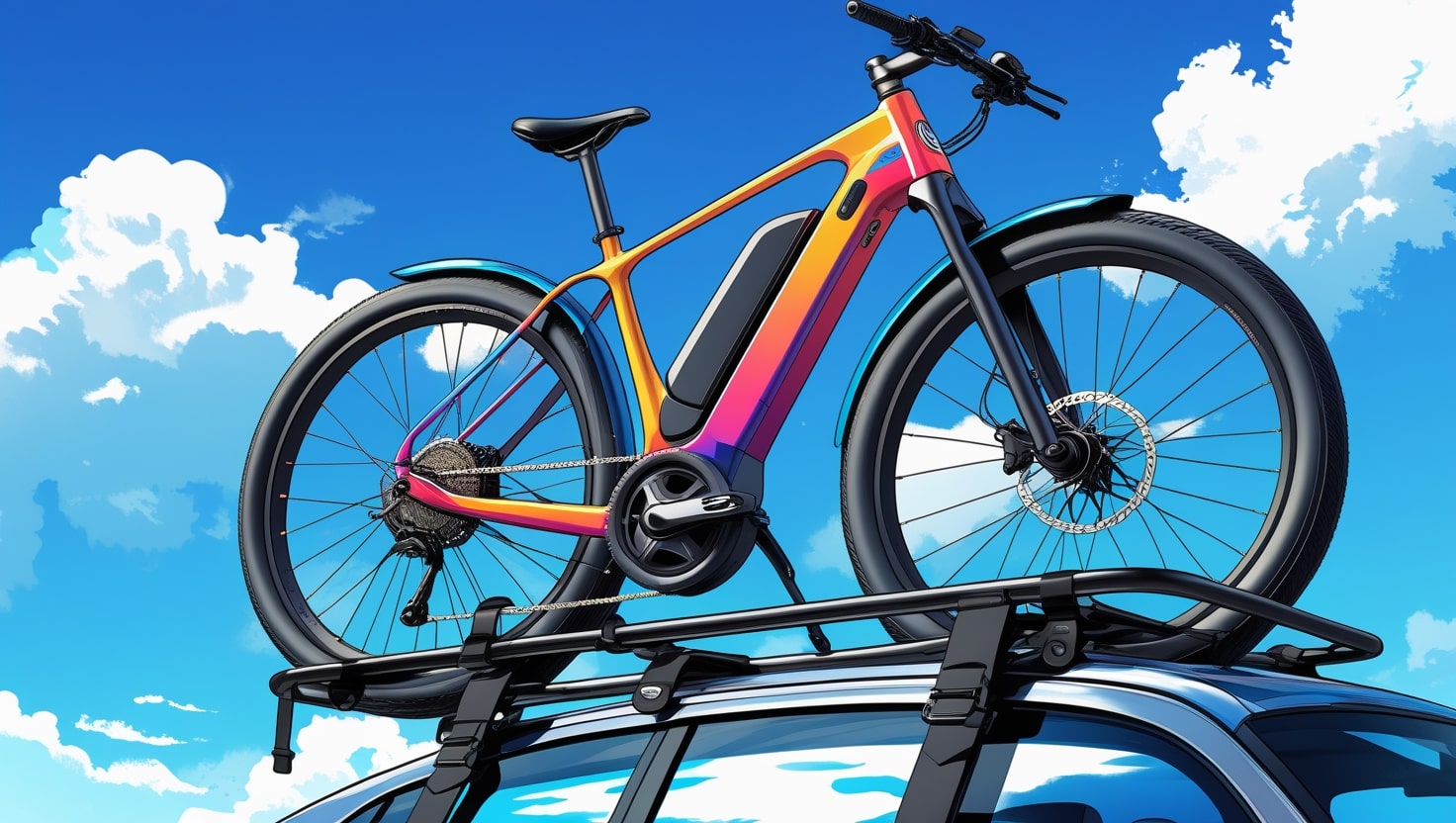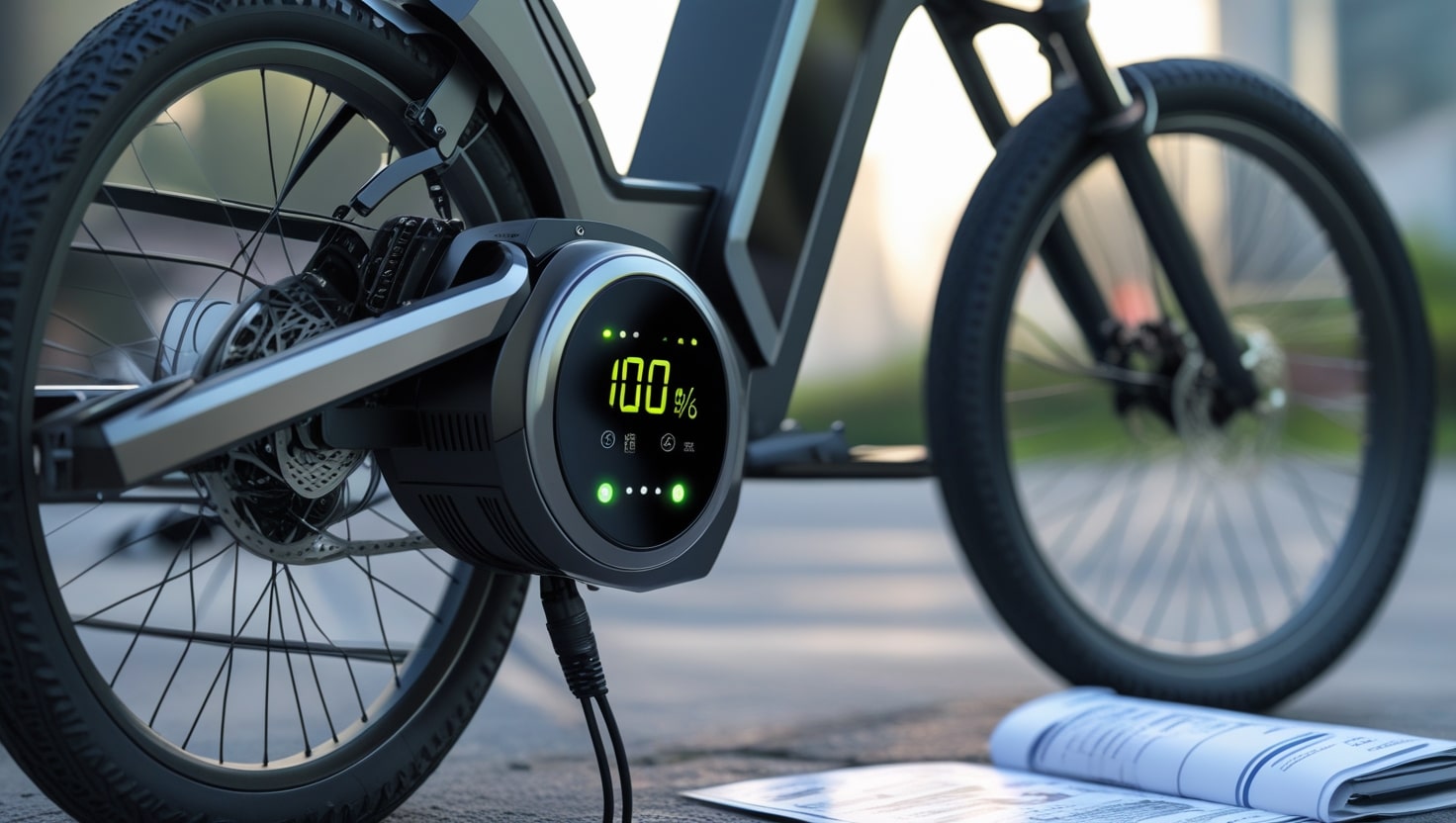If you’re wondering why are dirt bikes so expensive, you’re not alone; it’s a common question that can leave even the most passionate motocross enthusiasts scratching their heads. The prices of dirt bikes often come with hefty tags, and this can make owning one feel daunting, especially if your wife starts asking questions about these recent expenses. As an experienced rider, I can tell you that dirt bikes aren’t just costly; they are a true investment.
In this blog post, we’ll explain how everything from the high demand for performance parts to the advanced technology in MX bikes contributes to the price. These expenses, although steep, reflect the cutting-edge engineering that goes into each bike to ensure safety, durability, and exhilarating performance. While it’s truly expensive, the passion for riding keeps me and others advocating for the joy and thrill that motocross offers.
Specialized design and engineering
The magic of a dirt bike lies in its specialized design and engineering, built for rugged terrain and harsh conditions. Unlike regular motorcycles, these bikes need to be durable and equipped to withstand the challenges of off-road trails, motocross tracks, and demanding environments. This doesn’t come easy; manufacturers put in heavy investment in research and development to ensure each bike can handle every bump and jump. From lightweight materials to advanced suspension systems, each feature is designed to handle tough rides while keeping the bike responsive and resilient.
The production process involves significant costs for specialized parts like reinforced tires, high-quality suspension, and lightweight but tough frames. For riders who value a dependable bike that performs at its best, these added costs are worth it, making dirt bikes the true stars of the trails.
Why are Dirt Bikes so Expensive?
When it comes to dirt bikes, high-performance components are essential, driving up the cost significantly. Manufacturers use cutting-edge technology and premium materials to build top-of-the-line engines, precise suspension systems, and high-quality brakes to deliver the control, agility, and power that riders need for every off-road adventure. Each dirt bike is crafted to ensure the performance required to handle rough terrains while providing the overall stability and systems that riders depend on. For those who are passionate, this attention to quality and detail is what makes the thrill worth it. That’s why dirt bikes are so expensive.
Related: Are Pedego Bikes Worth the Money?
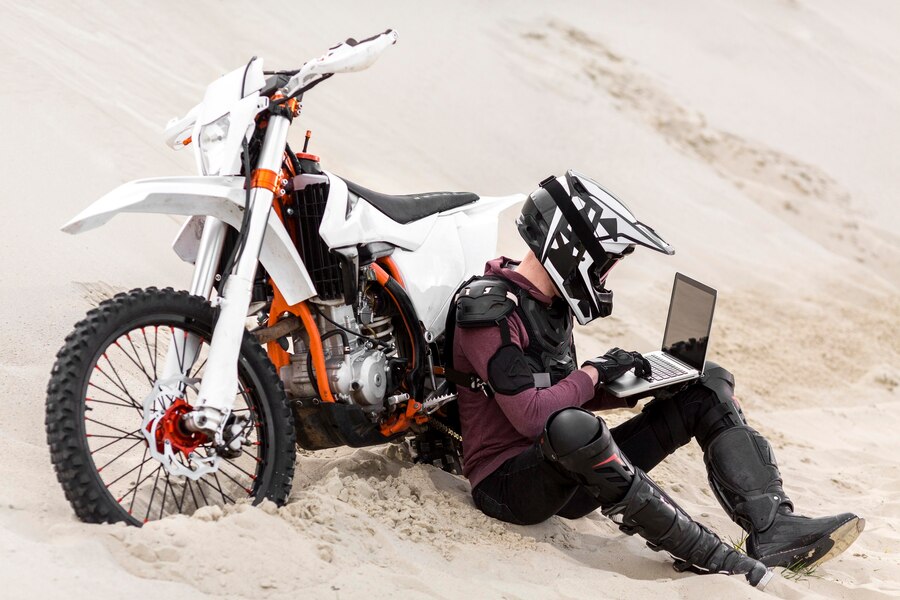
Production runs are limited
Many people are surprised to learn that dirt bikes are produced on a limited scale, unlike other vehicles with larger production runs. This smaller volume means manufacturers don’t benefit from the cost savings of mass manufacturing. As a result, per-unit costs are higher because expenses like research and development are spread across fewer units. With fewer numbers in sales and less demand than largely produced lines, companies need to raise the overall price to meet their goals. This process naturally drives up the costs to keep these specialized machines profitable.
Continuous innovation
In the highly competitive world of dirt biking, newer models are constantly hitting the market with advanced technologies and enhancements over previous versions. Each innovation and process of developing the latest features integrates costly technologies that contribute to the overall price. This cost is ultimately passed on to consumers, making dirt bikes expensive. In the race to lead the industry, manufacturers invest heavily to ensure each new release stands out, so only the best can avoid being a runner-up in the fast-moving world of motocross.
Related: How Much for Dirt Bikes
Rigorous testing and quality control
Dirt bikes face intense pressure from extreme riding conditions, so rigorous testing and strict quality control are paramount. Manufacturers must invest significant resources to ensure each bike meets safety standards and can withstand the harsh environments they’re designed for. This process adds considerable cost to the overall production, as every aspect of testing and quality control is crucial for delivering durable, high-performance machines that can handle any challenge.

Brand prestige and heritage is one of the reasons Why is motocross expensive
For many dirt bike enthusiasts, the brand itself carries a certain reputation and heritage that justifies the higher prices. Established manufacturers with a rich history in off-road racing have a proven track record of delivering reliable and high-quality bikes. This significant role in pricing means brands with years of expertise and achievements can confidently charge more, as their products are trusted and valued for their strong background in racing and performance.
Related: best bikes to build a cafe racer
How to save money in motocross?
Navigating the expenses of motocross can feel like a big task, but insiders in the MX world have found ways to make it a bit more rewarding. Buying a dirt bike in the off-season is one smart strategy to get a good discount that can really warm your heart and save some extra dollars. You could also look at older models instead of the latest ones; you might miss out on the hype, but you’ll still get an amazing ride at a fraction of the price. A little patience in waiting for the right time can make every dollar count.
If you’re just dipping your toes into motocross, consider a pre-loved bike rather than a shiny new one straight from the salon. This approach lets you see if the sport is truly for you while helping you understand the sport’s ins and outs without spending a fortune. A well-maintained used bike will still give you the thrill, all while saving some serious bucks.
DIY all the way
When it comes to maintenance, relying solely on a service center can quickly add up, costing a fortune and sometimes even your peace of mind. That’s why many riders recommend learning some basics and equipping yourself with YouTube tutorials to tackle simple fixes at home. While serious repairs may be impossible to handle on your own, regular tasks like changing filters and oils can easily be done in your garage with a little effort and getting your hands dirty.

Add protection with dirt bike graphics
Prevention is key for keeping your dirt bike in great condition, especially since it’s a big investment. Many riders recommend adding graphics to cover and protect the plastics to keep them intact if any accidents happen. High-quality material, like the 21MIL thick substance, prevents scuffs and buffs from being left on the surface, preserving your bike’s appearance. While dirt bike graphics may not be the cheapest option on the planet, they’re worth it in the long run—and there are even ways to save if you shop smartly.
Related: How to Become a Bike Mechanic
Dirt Bikes vs Regular Bikes
The expense of dirt bikes becomes clear when you juxtapose them with regular bikes. Dirt bikes are engineered for rugged terrains and extreme off-roading conditions, making them far more demanding to build. They require high-cost materials and craftsmanship to ensure resilience and durability. Key elements like suspension, tires, and overall build are optimized for challenging environments, often incorporating premium features and state-of-the-art technology.
| Feature | Dirt Bikes | Regular Bikes |
|---|---|---|
| Suspension | Advanced, for rough terrains | Basic, suitable for paved roads |
| Tires | Thicker, knobby for off-road grip | Slimmer, smooth for less resistance |
| Frame | Built for durability and impact resistance | Lighter and designed for speed |
| Engine | Powerful, for rugged terrains | Moderate, for efficiency on roads |
| Price | Higher, due to specialized components and build | Lower, from mass production and simpler design |
| Purpose | Built to handle extreme conditions | Optimized for city and road use |
The materials used in dirt bikes, like carbon fiber, titanium, aluminum, and magnesium, make them strong and suitable for intense off-roading adventures. Unlike regular bikes, dirt bikes are built to handle off-road demands and stand a better chance on rough trails. This distinction and the high demand for dirt biking as a popular activity and hobby are a significant factor in the price difference.
Zooming Ahead with Technological Advancements
Dirt bikes have come a long way. Every year, they are upgraded with the latest technology, making them far ahead of the earlier models.
Evolving Features
Imagine comparing a rotary phone to a smartphone; just as the tech world has evolved, so have dirt bikes. Today’s bikes come with advanced components like closed chamber forks with tweakable settings—features that are true game-changers for riders. But with each tech advancement, there’s an added price to keep up with these cutting-edge components.
Related: How Much Does Motorcycle Weigh
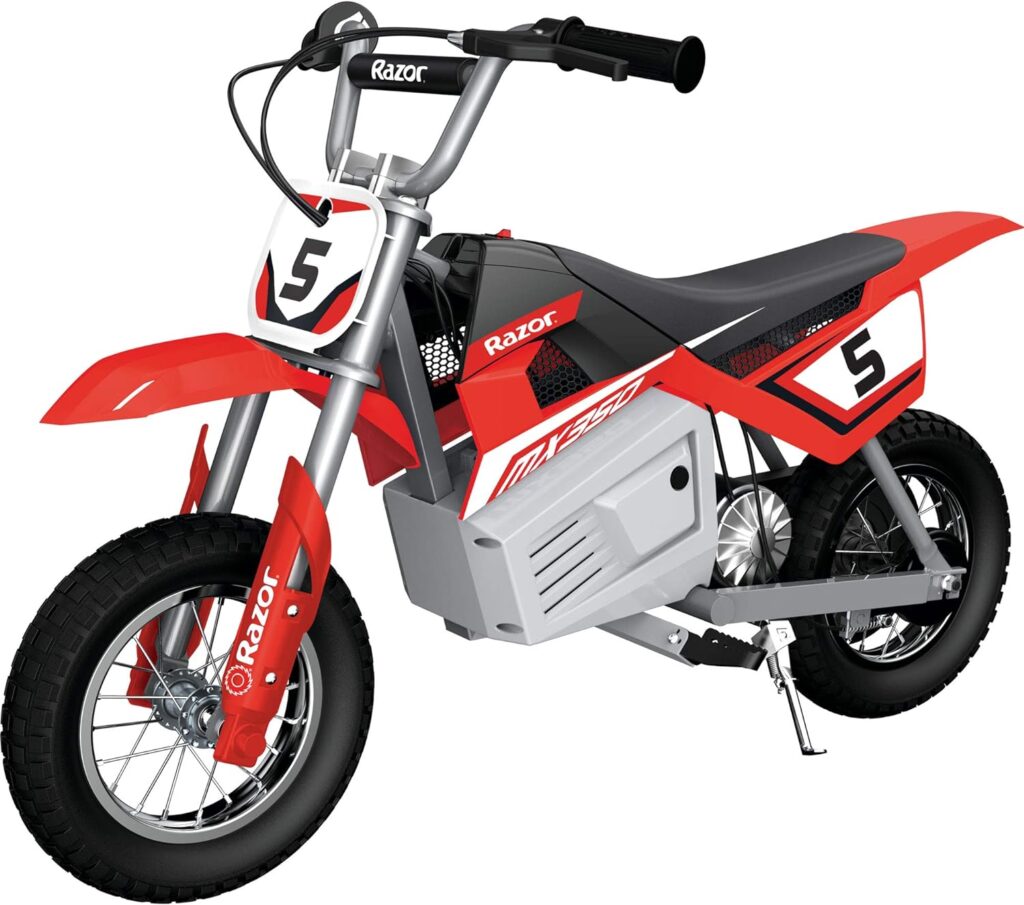
Materials: The Backbone of Every Dirt Bike
Every dirt bike enthusiast understands both the dangers and excitement of off-road trails. To handle these tough conditions, a bike needs to be made from highly durable materials.
Rugged Demands
Riding off-road is no easy stroll in the park; it’s more of a dance with nature that requires a bike built for peak performance. Only the best materials can ensure a reliable ride that doesn’t miss a step. That’s why lightweight alloys and tailored plastics are chosen for their durability and strength. These advanced materials allow dirt bikes to handle rough trails with ease, making them ideal for demanding terrains.
Beyond the Price Tag: The True Value of Dirt Bikes
The investment in a dirt bike might initially have you tightening your purse strings, but think of the exhilarating rides, the rush of the wind against your face, and the pure thrill of every trail. The experience is truly worth it. After all, buying a dirt bike isn’t just about the cost; it’s about owning a machine that brings adventure and excitement into your life.
The Bigger Picture
When you buy a dirt bike, the post-purchase journey is just beginning. Regular maintenance and timely repairs become part of your routine, along with those irresistible accessories that enhance every ride. It’s all part of the package when you commit to the dirt biking lifestyle. Choosing dirt biking means embracing these ongoing costs, but the rewards make it all worth it.

Golden Tips: Saving Money When Buying a Dirt Bike
Understanding why are dirt bikes so expensive, but the real question is: How can we make them more affordable?
The Off-season Advantage
Just like holiday decorations are cheaper in January than December, dirt bikes also have an off-season when prices drop. This off-season gives you a window to strike a deal and save on your purchase. Taking advantage of these lower prices can be a smart move, especially if you’re looking to buy without breaking the bank.
The Charm of Used Bikes
Not every shiny new bike is the best choice. A used bike can often be a smarter choice, especially if it’s already tested and shows resilience on the trails. For someone just dipping their toes into the dirt biking world, a used bike can be an affordable way to experience the thrill without paying the premium for a new model.
Smart Shopping for Gear
When it comes to shopping for dirt biking gear, you don’t need to buy everything in one go. Instead, handpick the essentials over time to save yourself a penny or two. This smart approach allows you to focus on quality without feeling the pressure of buying everything at once, making it easier on your budget.
Oldie but Goldie: Previous Models
Sometimes the latest isn’t always the greatest. Last year’s model can offer the same thrill without the extra hype and often provides better value for your buck.
Think About Displacement
While it might be tempting to go for a dirt bike with a larger engine displacement, it’s not always essential for a good off-roading experience. Smaller engines, like 125cc, can provide a satisfactory ride, especially for beginners. For those just starting, a smaller engine often balances power and control, making it a smart choice without the added cost of a high-displacement engine.
Accessories and Add-ons
When looking at the overall cost of a dirt bike, remember that accessories like helmets, gloves, and protective gear are vital for safety. While premium features on the bike may be tempting, it’s often the add-ons that truly enhance your riding experience without breaking the bank. Consider aftermarket options to elevate your ride affordably, giving you quality gear that fits your needs.

Smart Financing and Budgeting Tips
Buying a dirt bike can require careful financial planning.
-
Set a budget: Dirt bikes come with high costs due to production fees, import taxes, and costly materials. Before diving into the world of dirt biking, setting a budget is essential to manage these expensive upfront costs. Knowing your passion and the reality of the pricing will help you stay on track.
-
Consider EMI options: Many renowned brands like Kawasaki, Harley-Davidson, and KTM offer monthly payment plans or EMI options to make dirt bikes more accessible. These finance plans allow you to spread out the expense over a month and make financing your passion easier.
-
Save in advance: If you’ve been eyeing a particular model with a specific engine size like 125cc, 250cc, or 450cc, consider setting aside a small amount each month. Larger displacement models often come at a higher price but offer a great power-to-weight ratio and exhilarating rides. With a bit of discipline, you’ll reach your goal and be ready to buy when the time is right.
Trustworthy Places to Shop
For a first-time buyer, choosing the right location for such a big purchase is essential.
It’s also helpful to know the details of whether or not dirt bikes are legal in your area before committing to buying them.
-
Research dealerships: Look up reviews, ratings, and customer feedback on popular brands like Kawasaki and KTM to gain insights into quality and features. Choosing reputable dealerships ensures you’re getting the best value for your money.
-
Join local biking groups: Connect with enthusiasts in local biking groups to get invaluable advice on where to buy and what to avoid. They can also share maintenance requirements for specific models, giving you the inside scoop on what works best.
-
Attend biking events or exhibitions: These exhibitions and biking events are gold mines of information about the high demand for off-roading bikes. Plus, you might find special discounts on offer, making it a great chance to buy with added savings.
The Safety Net: Warranties and Guarantees
Buying a dirt bike is a big investment, so having protection is key. Ensure the bike you’re eyeing, whether it’s from a top brand or a lesser-known one, includes a robust warranty or guarantee. This not only gives peace of mind but can also save on potential maintenance and repair costs in the future. For bikes with powerful engines and a lightweight frame that’s optimised for off-roading, warranties can make a big difference in covering unexpected expenses.
In Conclusion
Unraveling the reasons behind the high pricing of dirt bikes reveals a unique blend of limited production, meticulous craftsmanship, and an unyielding technological pursuit. Every component — from the frames and brakes to the front fork, wheels, and suspension — is built with the highest standards of quality.
Due to their manufacture in smaller quantities compared to typical motorbikes, production costs for dirt bikes are much higher. For any buyer, understanding what bike fits them, along with choosing the right size, is essential.
At first glance, the investment might seem significant, but dirt bikes promise unparalleled adventures. Whether you’re owning one for the thrill or relishing the feeling of tackling exhilarating trails with mesmerizing vistas, the experience is truly worth every penny. The thrill of the ride, along with the joy of exploring rugged landscapes, makes the cost feel justified. If you’re asking if it’s worth it, the answer is undoubtedly yes.
FAQs
How do dirt bikes for kids differ in price compared to adult versions?
Dirt bikes designed for children are generally less expensive than those made for adults. This is because they come with a smaller size, lesser engine capacity, and simpler features that are tailored for younger riders. While the price might be lower, safety features remain paramount to protect kids, so it’s crucial to ensure that quality isn’t compromised when selecting a model for kids.
Are there specific brands that offer more budget-friendly dirt bike options?
While renowned brands like Kawasaki and KTM are often associated with a premium price due to their high-end features and strong reputation, there are several other brands that offer budget-friendly alternatives without skimping on quality. It’s advisable to research and read reviews to find the best fit for your budget and needs. Exploring these options can help you get a quality bike that meets your expectations without breaking the bank.
With electric vehicles becoming more popular, are electric dirt bikes a cheaper alternative?
Electric dirt bikes are gaining traction in the market and can be more cost-effective in terms of maintenance and fuel costs compared to traditional petrol-powered bikes. However, the initial price point for electric models can be comparable or even higher than traditional ones, depending on the brand and features. This makes them a mixed option for riders looking to save on long-term expenses.
Is the resale value of dirt bikes high, given their expensive initial price?
The resale value of a dirt bike can be significant if the bike is well-maintained and from a reputable brand. Typically, dirt bikes that are kept in good condition can retain a portion of their initial value over time. However, like all vehicles, depreciation is expected. Various factors like the brand, the bike’s condition, and how it has been maintained over time influence how much value it keeps.

